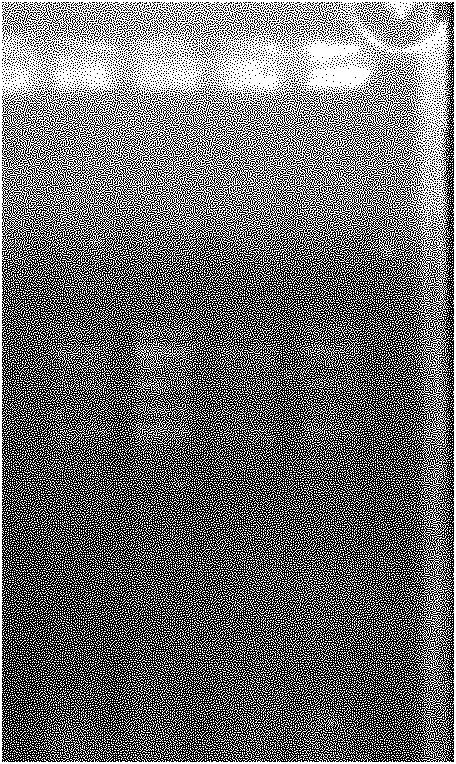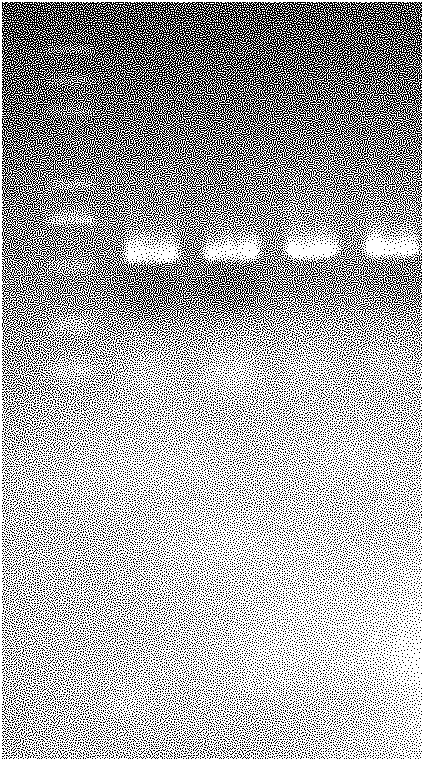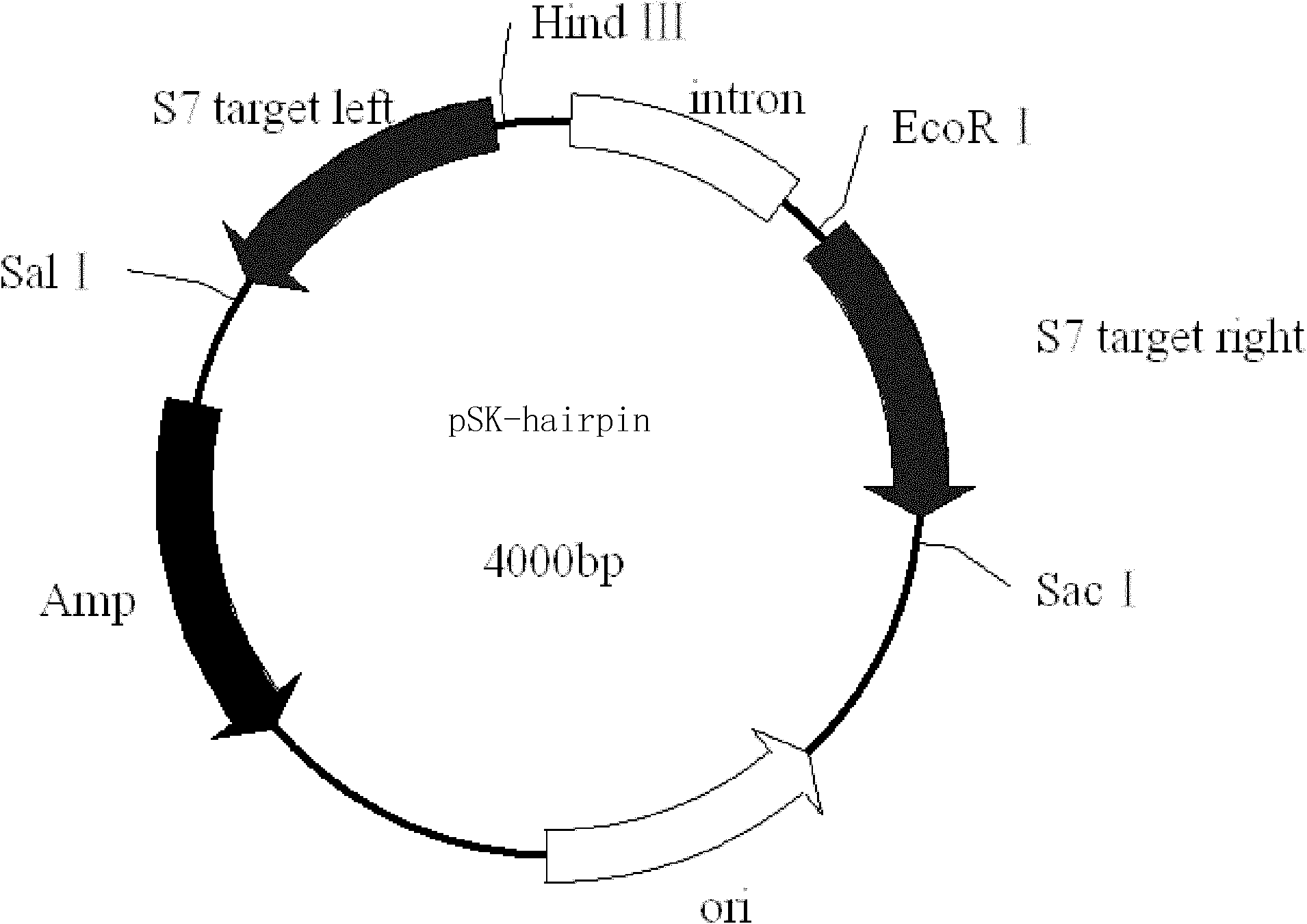Method for cultivating plant capable of preventing rice black-streaked dwarf virus infestation
A plant and purpose technology, applied in the field of cultivating plants resistant to rice black-streaked dwarf virus infection, can solve the problems of rice and corn disease aggravation, achieve broad prospects, disease resistance, no ecological risk, and specific target effect
- Summary
- Abstract
- Description
- Claims
- Application Information
AI Technical Summary
Problems solved by technology
Method used
Image
Examples
Embodiment 1
[0043] Embodiment 1, the discovery of target sequence (S7-1-Hp)
[0044] 1. Extraction of double-stranded RNA
[0045] Take 0.3g of rice (Huajing No. 6) leaves infected with rice black-streaked dwarfvirus (Rice black-streaked dwarfvirus), add liquid nitrogen and grind it into powder, put it into a 2mL centrifuge tube; add 700μL 2×STE buffer, 100μL SDS solution (10%), 900 μL of water-saturated phenol, vortexed for 30 minutes; the vortexed sample was centrifuged at 10000 g for 15 minutes, the supernatant was taken, and ethanol was added to a final concentration of 16.5%, then 3% CF11 cellulose powder was added and shaken for 30 minutes Minutes; centrifuge at 12000g for 3-5 minutes at 4°C, discard the supernatant, add 0.5ml of 1×STE buffer solution containing 16.5% ethanol to the pellet, shake for 5 minutes, then centrifuge at 12000g for 3-5 minutes at 4°C, discard the supernatant Wash the precipitate three times in this way; add 0.25mL 1×STE buffer to the thoroughly rinsed prec...
Embodiment 2
[0057] Embodiment 2, cultivating resistant rice black-streaked dwarf virus-infected plants
[0058] 1. Construction of recombinant plasmid pSK-hairpin (hairpin intermediate vector)
[0059] 1. Synthesize the double-stranded DNA (S7-1-Hp) shown in sequence 2 of the sequence listing.
[0060]2. Using the double-stranded DNA shown in Sequence 2 as a template, perform PCR amplification with a primer pair consisting of Hp left F (701) and Hp left R (702), to obtain PCR amplification product A.
[0061] Hp left F(701): 5'- GTC GAC ATGGATAGACCTGCTCGAGAAC-3';
[0062] Hp left R (702): 5'-gccg AAGCTT TTCTCAACGTCATTTTTGATTAC-3'.
[0063] The Sal I recognition sequence is underlined in Hp left F(701). In Hp left R (702), the HindIII recognition sequence is underlined.
[0064] 3. Using the double-stranded DNA shown in Sequence 2 as a template, perform PCR amplification with a primer pair consisting of Hp right F (703) and Hp right R (704), to obtain PCR amplification product B. ...
PUM
 Login to View More
Login to View More Abstract
Description
Claims
Application Information
 Login to View More
Login to View More - R&D
- Intellectual Property
- Life Sciences
- Materials
- Tech Scout
- Unparalleled Data Quality
- Higher Quality Content
- 60% Fewer Hallucinations
Browse by: Latest US Patents, China's latest patents, Technical Efficacy Thesaurus, Application Domain, Technology Topic, Popular Technical Reports.
© 2025 PatSnap. All rights reserved.Legal|Privacy policy|Modern Slavery Act Transparency Statement|Sitemap|About US| Contact US: help@patsnap.com



